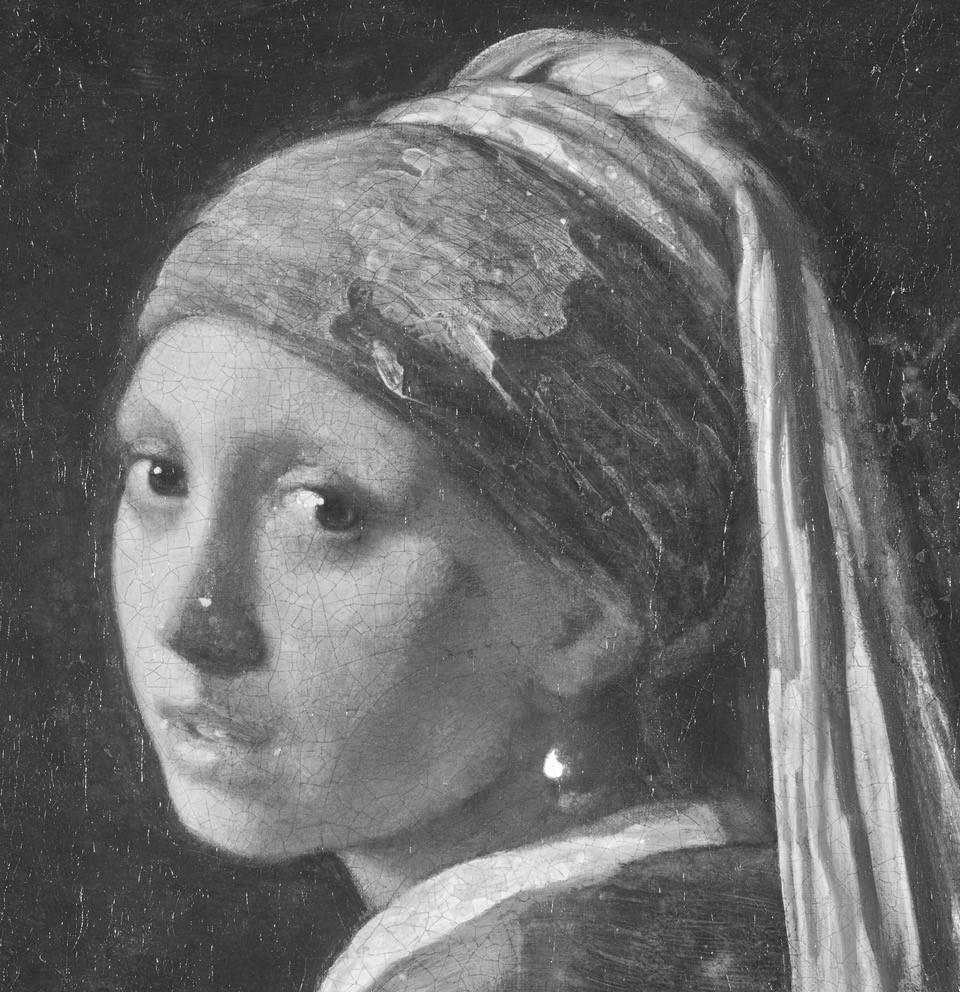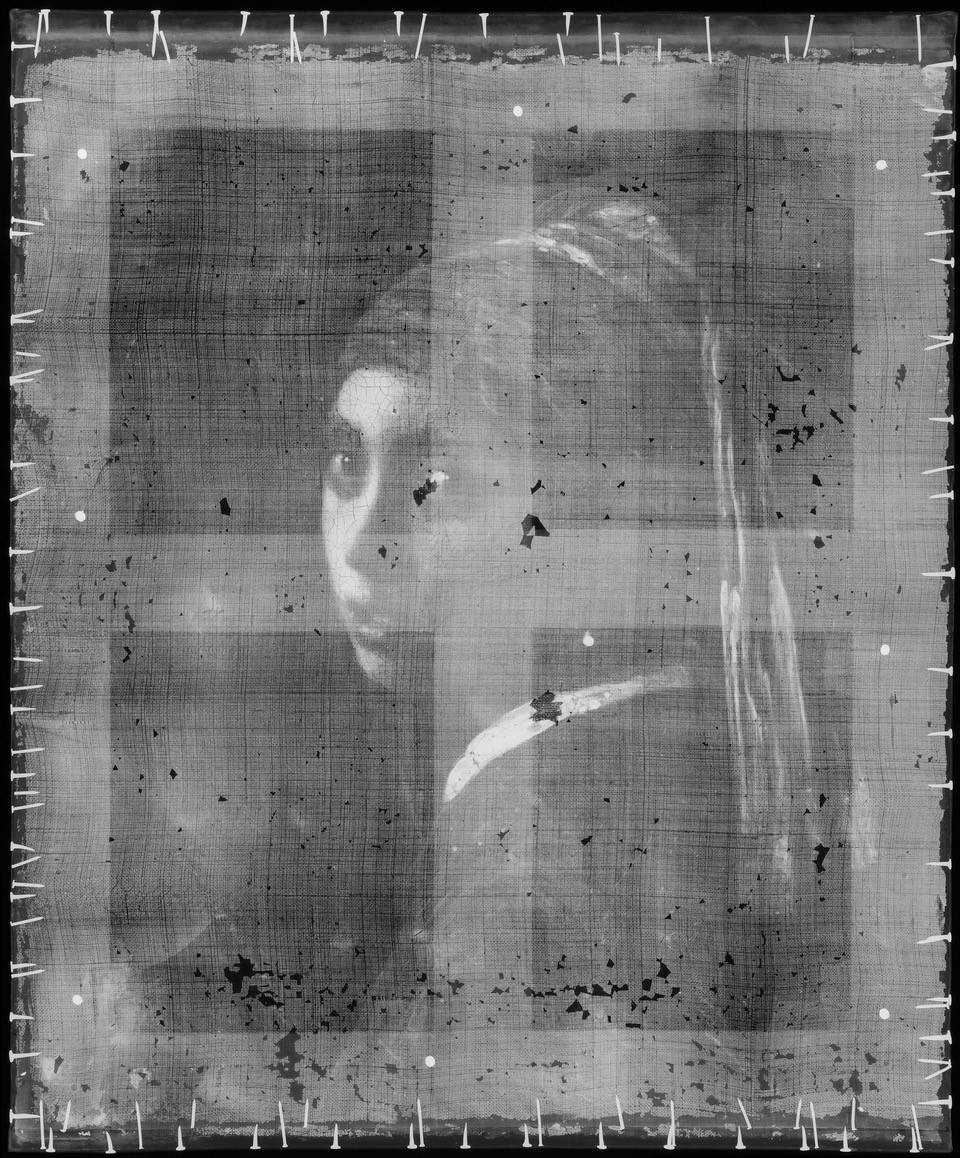
If you look up #mygirlwiththepearl on Instagram, you’ll see hundreds of creative photos inspired by the Girl with a Pearl Earring. In our files in the conservation studio at the Mauritshuis, we also have hundreds of photos of The Girl taken over the course of the last century. It’s important to document how a painting changes over the course of time: especially before, during and after a conservation treatment. As time passes, the materials in a painting can change, but camera equipment also improves. Nowadays, digital photography and computer-assisted analysis provides lots of possibilities for taking and using these photos.







